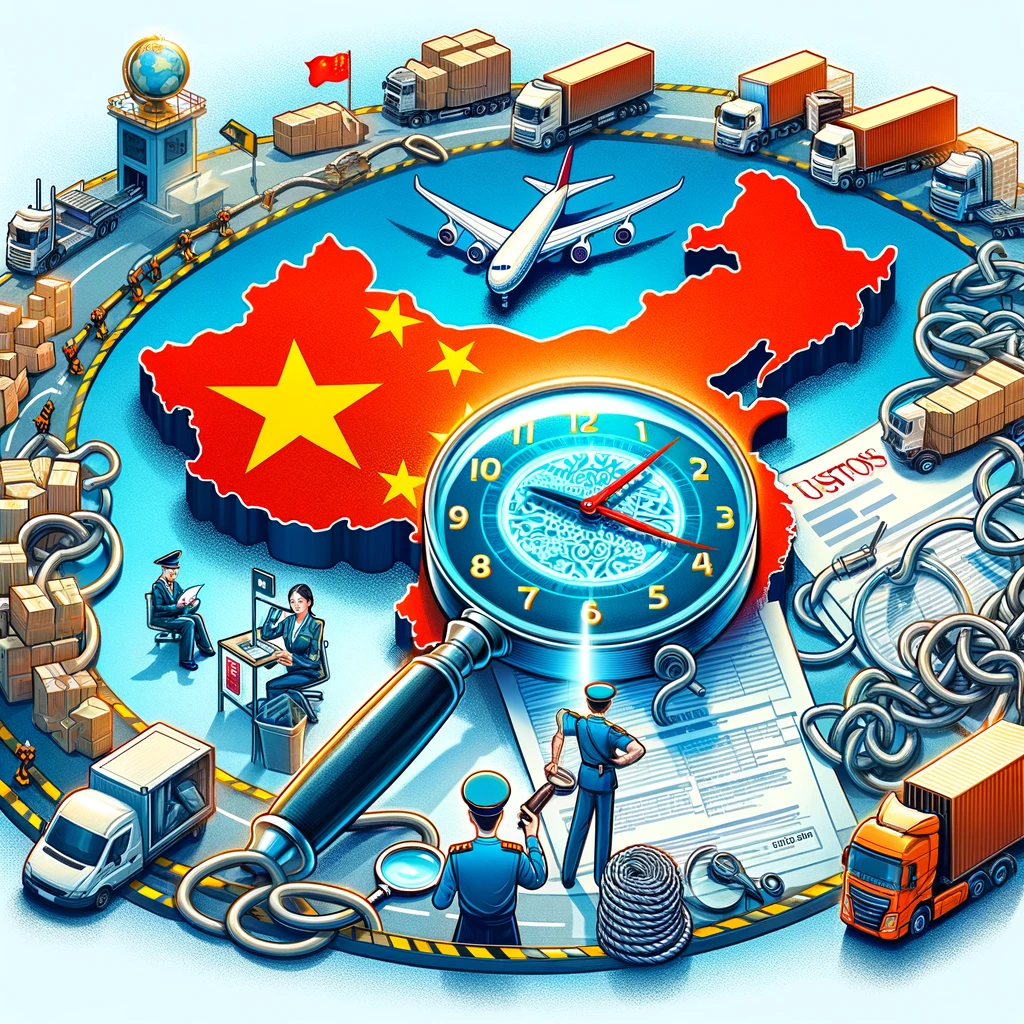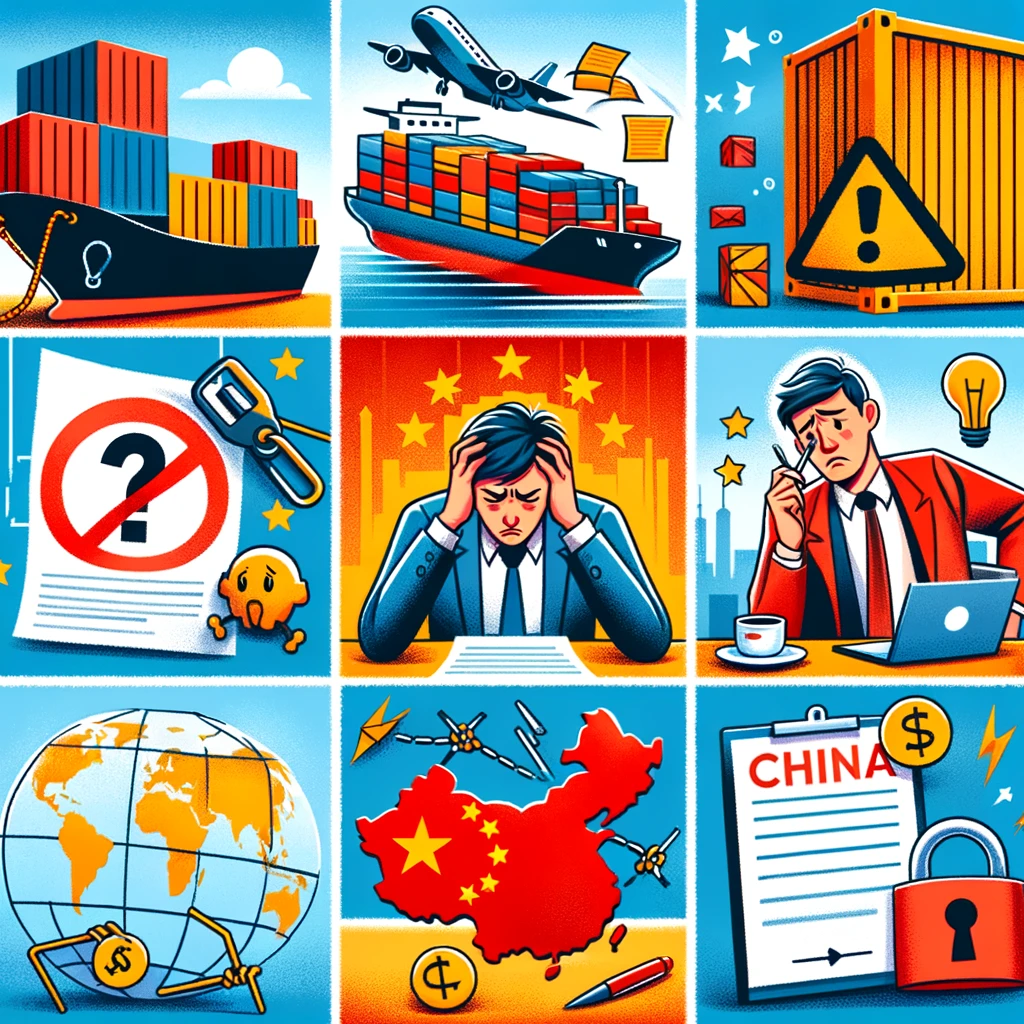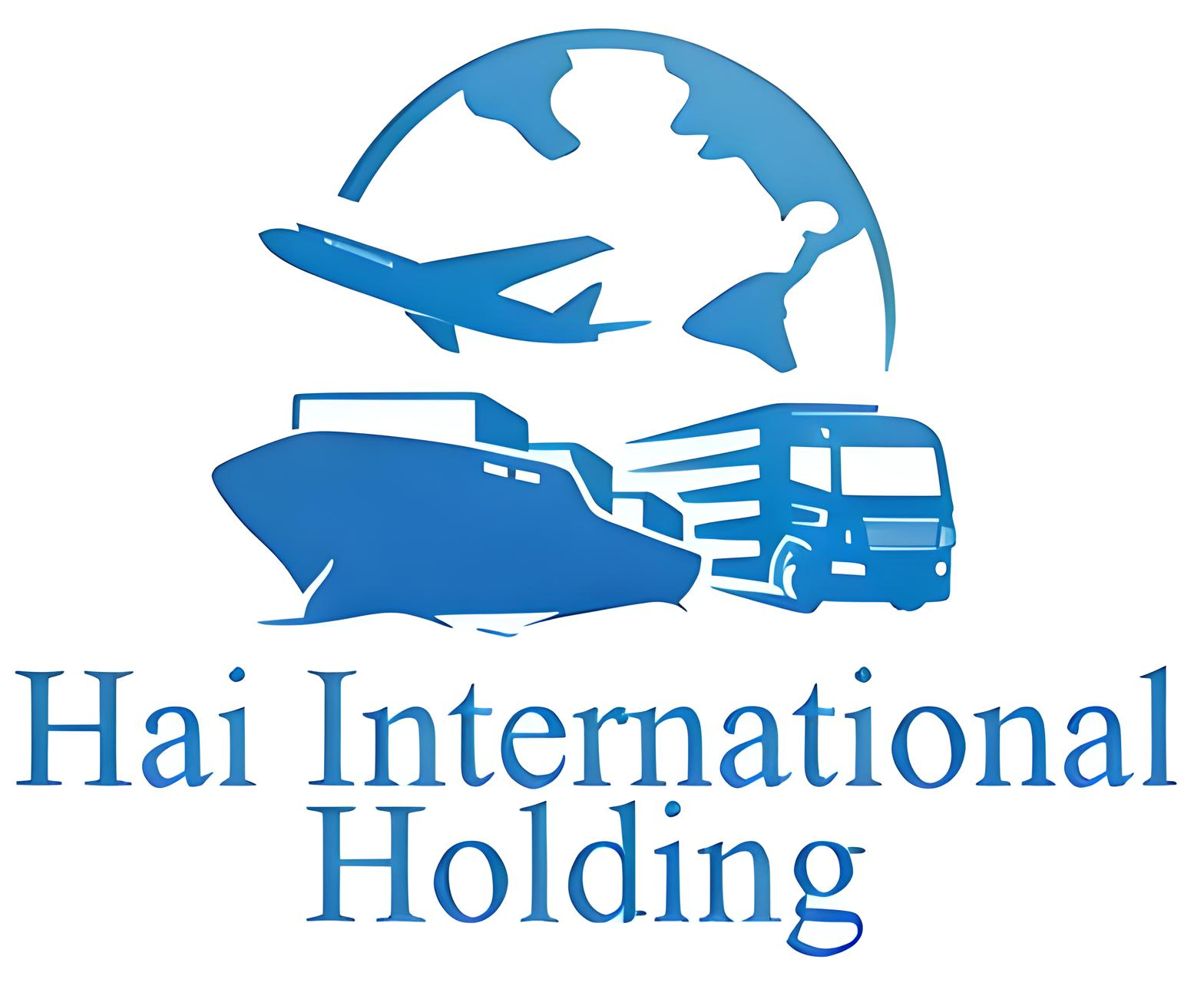Have you ever wondered why exporting to China can be both a land of opportunity and a minefield of mistakes?
China’s emergence as a global economic powerhouse has transformed it into a key player in international trade. With its vast consumer base and growing economic influence, exporting to China offers unparalleled opportunities for businesses worldwide. However, navigating this complex market requires not only business savvy but also a deep understanding of local regulations and cultural nuances.
Exporting to China: A Comprehensive Overview
Global Trade and China’s Economic Impact
China isn’t just another market; it’s a critical hub in global trade. In 2021, China’s share in global exports was a staggering 14.7%, showcasing its pivotal role in international commerce. For businesses looking to expand, understanding China’s economic landscape is not just beneficial – it’s essential.
Introduction to HAI International Holding’s Expertise
HAI International Holding stands at the forefront of facilitating smooth export operations to China. With years of experience and a deep understanding of the Chinese market, HAI International Holding offers a guiding hand through the labyrinth of Chinese trade regulations and practices. Their expertise not only simplifies the process but also maximizes the potential for success in this lucrative market.
Purpose of the Guide
Avoiding Export Pitfalls: A Primer for Businesses
Why do so many businesses struggle when exporting to China? Often, it’s not for a lack of effort but a lack of understanding. This guide aims to unveil the common pitfalls that businesses encounter and provide practical advice to navigate these challenges effectively. From regulatory hurdles to cultural misunderstandings, this article is your compass in the complex journey of exporting to China.
Chinese Market Regulations: Navigating Compliance

Understanding China’s Regulatory Environment
Why is understanding China’s regulatory environment crucial for successful exporting?
Exporting to China is more than just shipping goods; it’s navigating a complex web of regulations and standards. China’s regulatory environment is both dynamic and intricate, often posing a challenge for foreign businesses. For instance, China’s customs laws have evolved significantly, reflecting changes in international trade practices and domestic economic policies. In 2020, China implemented the Foreign Investment Law, aimed at improving transparency and creating a more level playing field for foreign investors. Understanding these regulations is not just a compliance matter; it’s a strategic advantage.
Key Regulations to Consider
- Customs Regulations: Understanding tariff classifications, import duties, and exemptions.
- Product Standards: Aligning with China’s GB standards for product quality and safety.
- Business Licensing: Navigating the requirements for obtaining the necessary business licenses.
Standards and Legal Compliance in China
How can businesses ensure compliance with Chinese standards and legal requirements?
Compliance in China goes beyond mere adherence to laws; it involves a proactive approach to understanding and integrating these standards into every aspect of the business process. China’s GB standards, akin to the ISO standards in other countries, dictate product quality, labeling, and safety requirements. Non-compliance can result in product rejections, fines, or even legal action.
Strategies for Ensuring Compliance
- Regular Audits: Conducting periodic reviews of business practices against current regulations.
- Partnering with Local Experts: Collaborating with entities like HAI International Holding, who are well-versed in the nuances of Chinese regulations.
- Staying Informed: Keeping up with the frequent changes and updates in Chinese laws and standards.
Overcoming Cultural and Language Barriers in China

Language Solutions for Chinese Markets
How significant is the language barrier when doing business in China?
The language barrier in China is not just about translation; it’s about conveying the right message in a market where miscommunication can lead to significant business missteps. According to a survey, over 60% of Western companies report language barriers as a significant challenge in their Chinese operations. Utilizing professional translation services or hiring bilingual staff isn’t just a logistical step; it’s a strategic move to bridge the gap between different business cultures.
Effective Communication Strategies
- Professional Translation Services: Ensuring accurate translation of documents and communications.
- Bilingual Staff: Employing staff proficient in both English and Mandarin for smoother operations.
- Cultural Training: Educating your team on the nuances of Chinese business communication.
Cultural Adaptation and Business Success
Why is cultural adaptation crucial for business success in China?
Understanding and adapting to Chinese culture goes beyond basic etiquette; it’s about respecting and integrating into a business environment that is markedly different from the West. For example, the concept of ‘Guanxi’ (关系), or personal relationships, plays a pivotal role in Chinese business dealings. A McKinsey report highlighted that businesses that adapted their operations to local Chinese culture saw a 20% higher success rate than those that didn’t.
Key Elements of Cultural Adaptation
- Understanding ‘Guanxi’: Building and maintaining strong personal relationships.
- Local Market Insights: Tailoring strategies to fit local consumer preferences and practices.
- Cultural Sensitivity: Being aware of cultural norms and practices in business interactions.
Ensuring Correct Documentation for Chinese Customs

Essential Documents for China Export
What are the must-have documents for a hassle-free export to China?
Proper documentation is the backbone of smooth customs clearance in China. A misstep in documentation can lead to delays, fines, or even shipment rejections. For instance, the Commercial Invoice and Packing List are fundamental, but they must be meticulously prepared to match the actual contents of the shipment. As per a report by the World Bank, streamlined documentation can reduce export time by up to 25%.
Key Documents for Export
- Commercial Invoice: Accurate and detailed, reflecting the actual value and description of goods.
- Packing List: Precise, matching the actual contents of the shipment.
- Certificate of Origin: Verifying where the goods were manufactured, crucial for tariff calculations.
Avoiding Documentation Errors in China Trade
How can businesses minimize errors in export documentation for China?
Document accuracy is not just about filling out forms; it’s about understanding the specific requirements of Chinese customs. A common error, such as a mismatch between the declared value on the Commercial Invoice and the actual value, can lead to significant complications. Implementing a double-check system or seeking assistance from experienced freight forwarders like HAI International Holding can greatly reduce such risks.
Strategies to Minimize Errors
- Detail-Oriented Approach: Ensuring all information is accurate and corresponds to shipment contents.
- Regular Updates: Keeping abreast with the latest regulatory changes in Chinese customs requirements.
- Professional Assistance: Leveraging the expertise of freight forwarders who specialize in the Chinese market.
Logistics Challenges in Chinese Shipping

Navigating China’s Logistics Complexity
Why is understanding China’s logistics landscape key to successful shipping?
China’s logistics network is a vast and intricate system, marked by its unique regional differences and bureaucratic complexities. For example, the varied infrastructure quality between urban and rural areas can significantly impact transit times and costs. A 2022 study by the Logistics Performance Index ranked China 26th globally, highlighting challenges in customs clearance and infrastructure disparities. Navigating this landscape requires not just an understanding of logistics but a strategy tailored to China’s unique environment.
Key Aspects of China’s Logistics
- Regional Variations: Adjusting strategies for urban versus rural logistics.
- Customs and Clearance: Navigating customs processes efficiently.
- Infrastructure Considerations: Planning for variances in transportation and warehousing facilities.
Efficient Shipping Strategies in China
How can businesses optimize their shipping strategies in the complex Chinese market?
Efficient shipping in China isn’t just about choosing the right carrier; it’s about an integrated approach that considers all aspects of the logistics chain. For instance, leveraging technology for tracking and logistics management can significantly enhance efficiency. Companies that adopt a holistic view of their supply chain tend to reduce their shipping costs by up to 15%, according to a report by McKinsey. Partnering with experienced freight forwarders like HAI International Holding can provide valuable insights into optimizing logistics strategies.
Strategies for Shipping Efficiency
- Technology Integration: Using advanced tracking and logistics management systems.
- Local Partnerships: Collaborating with local logistics providers for insider knowledge.
- Supply Chain Optimization: Reviewing and optimizing the entire supply chain for cost-effectiveness and reliability.
Intellectual Property in China: Protection Strategies

Chinese Intellectual Property Laws
How crucial is understanding Chinese Intellectual Property (IP) laws for foreign businesses?
Navigating the IP landscape in China is critical for any business looking to operate or export to this vast market. China’s IP laws have evolved significantly, especially with its 2019 amendments to the Trademark Law and the Anti-Unfair Competition Law. These changes reflect China’s efforts to align more closely with international IP standards. However, the World Intellectual Property Organization (WIPO) still ranks China high in terms of the volume of IP litigation, indicating the importance of thorough IP protection strategies.
Key Elements of China’s IP Laws
- Trademark Registration: Ensuring your brand is protected under Chinese law.
- Patent Filing: Understanding the nuances of China’s patent system.
- Copyright Compliance: Adhering to China’s unique copyright requirements.
Safeguarding IP in China’s Market

What strategies can businesses employ to safeguard their IP in China?
Protecting your IP in China is not a one-time action but a continuous process. Implementing a robust IP protection strategy is essential, given that IP infringement can lead to significant financial and reputational damage. Registration of IP rights in China is the first critical step. Companies should also consider proactive monitoring for any potential infringement and be prepared for legal enforcement. A report by the US-China Business Council emphasized that businesses with clear IP strategies in China experienced fewer issues and higher success rates.
Strategies for IP Protection
- Early and Comprehensive Registration: Registering IP rights as early as possible in China.
- Active Monitoring and Enforcement: Keeping vigilant for potential infringements and taking prompt action.
- Legal Preparedness: Having legal counsel familiar with Chinese IP law for potential disputes.
Quality Control for Chinese Import Standards

Meeting China’s Quality Expectations
Why is adhering to China’s quality standards essential for successful imports?
China’s market is not just vast but also demanding in terms of quality standards. Meeting these standards is critical for gaining and maintaining access to Chinese consumers. For instance, China’s GB standards, akin to the ISO standards, dictate stringent requirements across various product categories. A 2021 survey revealed that over 30% of foreign businesses faced challenges meeting these standards, leading to either delayed or rejected shipments. Understanding and adhering to these standards is therefore not just a compliance issue but a key to market success.
Core Components of China’s Quality Standards
- GB Standards Compliance: Aligning products with China’s national standards.
- Product Testing and Certification: Ensuring products undergo rigorous testing and obtain necessary certifications.
- Labeling and Packaging Standards: Meeting China’s specific labeling and packaging requirements.
Quality Assurance in Chinese Imports
How can businesses ensure consistent quality assurance for their products imported into China?
Maintaining consistent quality is vital in a market where consumer expectations and regulatory requirements are high. Implementing a robust quality assurance system is essential for minimizing the risk of non-compliance and maintaining brand reputation. Businesses should consider conducting regular quality audits and collaborating with reliable local partners who understand the nuances of Chinese quality standards. According to a report by McKinsey, companies that invested in quality assurance systems saw a reduction in import rejections by up to 20%.
Strategies for Ensuring Quality Assurance
- Regular Quality Audits: Conducting thorough checks to ensure ongoing compliance with Chinese standards.
- Supplier Collaboration: Working closely with suppliers to ensure quality consistency.
- Continuous Improvement Processes: Implementing systems for continuous quality improvement and feedback.
Understanding and Meeting Chinese Market Demand
Effective Market Research in China
How crucial is targeted market research for succeeding in the Chinese market?
Conducting in-depth market research is vital for businesses looking to penetrate China’s diverse and rapidly evolving market. The Chinese consumer base is not homogenous; it varies significantly across regions and demographics. For example, a 2022 market analysis showed that consumer preferences in Tier 1 cities like Shanghai and Beijing differ markedly from those in smaller cities. Understanding these nuances through targeted market research can be the difference between success and failure. This research should encompass consumer behavior, regional trends, and competitor analysis.
Key Aspects of Market Research
- Consumer Behavior Analysis: Studying the purchasing habits and preferences of Chinese consumers.
- Regional Trend Evaluation: Assessing variances in demand across different regions.
- Competitive Landscape Understanding: Analyzing competitors’ strategies and market positioning.
Product Adaptation for Chinese Consumers
What role does product adaptation play in capturing the Chinese market?
Adapting products to meet the specific tastes and needs of Chinese consumers is not just a marketing strategy; it’s a necessity for market entry and growth. For instance, many Western food companies have modified their recipes to suit local palates, leading to increased acceptance and sales. A study by Boston Consulting Group highlighted that product adaptation contributed to a 15-25% increase in sales for foreign companies in China. Tailoring products doesn’t mean changing your brand identity; it means respecting and responding to cultural preferences.
Strategies for Product Adaptation
- Cultural Customization: Modifying products to align with Chinese cultural preferences and values.
- Feedback Incorporation: Using consumer feedback to continuously improve and adapt products.
- Collaboration with Local Experts: Partnering with local firms to gain insights into market needs and expectations.
Packaging Requirements for Exporting to China

Packaging Standards in Chinese Imports
Why is understanding China’s packaging standards crucial for exporters?
Adhering to China’s packaging standards is not just about compliance; it’s a critical component of successful market entry. These standards, which can vary significantly from Western norms, include specifications for material, size, labeling, and safety. For example, China’s focus on environmental sustainability has led to strict regulations on packaging materials, as seen in the 2020 update to the Plastic Restriction Order. Non-compliance with these standards can lead to customs delays or rejections, making an understanding of these requirements essential for smooth market entry.
Key Packaging Standards
- Material Compliance: Using materials that meet China’s environmental and safety standards.
- Size and Weight Regulations: Adhering to specifications for packaging dimensions and weight.
- Labeling Requirements: Ensuring all packaging is accurately labeled as per Chinese regulations.
Common Packaging Mistakes to Avoid
What are the frequent packaging errors businesses make when exporting to China?
Many exporters overlook the intricacies of China’s packaging requirements, leading to costly mistakes. A common error is inadequate labeling, which can result in confusion or misinterpretation by customs officials. Another frequent oversight is non-compliance with material standards, particularly with China’s increasing focus on sustainability. These mistakes not only cause delays but can also tarnish a brand’s reputation in the Chinese market.
Strategies to Avoid Packaging Errors
- Thorough Label Review: Ensuring all labels meet Chinese linguistic and regulatory standards.
- Eco-friendly Materials: Choosing packaging materials that align with China’s environmental policies.
- Regular Compliance Updates: Staying informed about the latest changes in China’s packaging regulations.
Customs Delays in China: Planning and Prevention

Identifying Causes of Customs Hold-ups
What are the common causes of customs delays when exporting to China?
Understanding the reasons behind customs delays is key to preventing them. One major cause is inaccurate or incomplete documentation. For instance, a slight discrepancy in the product description or value can lead to lengthy hold-ups. Another significant factor is non-compliance with import regulations, such as failing to adhere to China’s strict packaging or labeling standards. A 2021 report indicated that nearly 20% of shipments to China experienced delays due to documentation errors.
Common Causes of Delays
- Documentation Discrepancies: Errors or omissions in shipping documents.
- Regulatory Non-Compliance: Failing to meet China’s import regulations.
- Customs Inspections: Random or targeted inspections based on suspicion of non-compliance.
Strategies to Mitigate Customs Delays
How can businesses effectively reduce the risk of customs delays in China?
Mitigating customs delays involves a proactive approach to compliance and documentation. Thoroughly reviewing all documentation before shipment can prevent many common errors. Additionally, understanding and adhering to all relevant regulations—from product standards to labeling requirements—is crucial. Building a good relationship with experienced freight forwarders like HAI International Holding can also help, as they can offer invaluable advice and assistance in navigating the complexities of Chinese customs.
Mitigation Strategies
- Comprehensive Documentation Review: Ensuring all documents are accurate and complete.
- Regulatory Compliance: Staying updated and compliant with all Chinese import regulations.
- Experienced Freight Forwarding Partners: Leveraging the expertise of specialized freight forwarders.
Tax Implications in Chinese Exporting

Navigating China’s Tax Landscape
Why is it essential for exporters to understand China’s tax landscape?
Grasping the complexities of China’s tax system is critical for any business looking to export to this major economic player. The tax regime in China includes various layers, such as VAT (Value Added Tax), consumption taxes, and custom duties, each with its own set of regulations and implications. For example, as of 2021, China’s standard VAT
rate for most goods is set at 13%, but it varies for different categories of products. In addition, there are tax incentives for certain types of foreign investments and exports. Failure to properly navigate this landscape can lead to unexpected costs and legal challenges, directly impacting the profitability and feasibility of export ventures.
Key Elements of China’s Tax System
- VAT and Custom Duties: Understanding the applicable rates and regulations.
- Tax Incentives and Exemptions: Identifying opportunities for tax savings.
- Compliance Requirements: Ensuring adherence to China’s tax filing and payment processes.
Tax Optimization for Exporters to China
How can exporters optimize their tax obligations when dealing with China?
Effective tax optimization is crucial for maintaining competitiveness and maximizing profits in the Chinese market. This involves strategic planning and a thorough understanding of the tax benefits and exemptions available. Utilizing Double Taxation Agreements (DTAs) that China has with many countries can be a key strategy. Additionally, engaging with tax professionals who specialize in Chinese tax law can provide crucial insights and strategies for effective tax planning. For instance, a study by PwC indicated that companies leveraging DTAs and tax incentives reported an average of 10% reduction in their overall tax liability.
Strategies for Tax Efficiency
- Leveraging DTAs: Making use of Double Taxation Agreements to reduce tax burdens.
- Seeking Professional Advice: Consulting with tax experts familiar with Chinese regulations.
- Staying Informed: Keeping abreast of the latest changes in China’s tax laws and policies.
Crafting Effective Marketing Strategies for China

Analyzing Chinese Consumer Behavior
How vital is understanding Chinese consumer behavior for marketing success?
Comprehending the diversity of Chinese consumer behavior is a cornerstone of any successful marketing strategy in China. Unlike many Western markets, China’s consumer landscape is characterized by rapid change and a unique blend of traditional and modern influences. For instance, a 2023 market study showed that digital platforms like WeChat and Alibaba are not just shopping channels but also key to influencing purchasing decisions. Additionally, the importance of social proof and influencer endorsements in China far exceeds that in many other markets. Tailoring marketing strategies to these behaviors is crucial for resonance and effectiveness.
Insights into Consumer Behavior
- Digital Engagement: Capitalizing on China’s robust digital ecosystem for marketing.
- Social Proof and Influencer Marketing: Leveraging the power of social influence in purchasing decisions.
- Regional Variations: Customizing strategies to different consumer preferences across China.
Creating Tailored Marketing Campaigns
What are the keys to creating marketing campaigns that resonate with Chinese consumers?
Developing marketing campaigns that connect with Chinese consumers requires more than just translation; it demands cultural adaptation and innovation. For example, incorporating elements of Chinese culture and values in advertising can significantly increase brand appeal. Brands that have successfully localized their campaigns have seen a notable increase in market penetration and customer loyalty. A case study by Harvard Business Review highlighted that brands with culturally tailored campaigns experienced a growth in market share by up to 15% in the Chinese market.
Strategies for Tailored Campaigns
- Cultural Customization: Integrating Chinese cultural elements into marketing materials.
- Digital and Social Media Focus: Utilizing China’s dominant digital platforms for targeted advertising.
- Continuous Consumer Research: Regularly updating marketing strategies based on evolving consumer trends and preferences.
Partnership Strategies in the Chinese Market

Risks of Sole Distributor Reliance
Why is relying on a single distributor in China a risky strategy?
Placing all your eggs in one basket by relying solely on a single distributor can be a risky move in China’s complex market. This approach often leads to a lack of market penetration diversity and can make businesses vulnerable to the distributor’s market fluctuations or changes in business strategy. For instance, a single distributor may focus on only one region or one customer segment, missing out on broader opportunities. A 2022 market analysis revealed that businesses with multiple distribution channels in China were 30% more likely to achieve comprehensive market coverage.
Challenges of Single Distributor Reliance
- Limited Market Reach: Restricted access to diverse regions and customer segments.
- Overdependence: Increased vulnerability to distributor’s performance and strategies.
- Flexibility Constraints: Difficulty in adapting quickly to market changes or opportunities.
Diversification Benefits in Chinese Partnerships
How can diversifying partnerships enhance success in the Chinese market?
Diversifying partnerships in China is not just a risk mitigation strategy; it’s a growth enabler. Working with multiple partners or distributors allows businesses to tap into different regional markets, customer segments, and distribution networks. This approach offers more agility and resilience in responding to market changes. Companies that adopt a diversified partnership strategy often find it easier to adjust to consumer trends, regulatory changes, and competitive dynamics. For example, a multinational company reported a 20% increase in sales after expanding its distributor network beyond major cities to include regional partners.
Advantages of Diversification
- Broader Market Access: Reaching different consumer groups and geographical areas.
- Reduced Dependency: Lowering the risk associated with dependence on a single partner.
- Enhanced Market Intelligence: Gaining diverse insights from multiple partners for more informed decision-making.
Conclusion
How can businesses successfully navigate the complexities of exporting to China?
In this comprehensive guide, we have explored various critical aspects that are paramount for successfully exporting to China. From understanding Chinese market regulations to overcoming cultural and language barriers, the importance of thorough preparation and local knowledge cannot be overstated. We delved into the intricacies of ensuring correct documentation, tackling logistics challenges, and the significance of protecting intellectual property in China’s unique market landscape.
Moreover, we highlighted the crucial role of quality control and meeting Chinese market demand through effective market research and product adaptation. Recognizing the importance of appropriate packaging, navigating the tax landscape, and crafting effective marketing strategies tailored to Chinese consumers was also emphasized. Lastly, we discussed the benefits of diversifying partnerships to mitigate risks and enhance market penetration.
Throughout these topics, one underlying theme has been consistent: the need for expertise and guidance in navigating these challenges. This is where HAI International Holding shines. With their in-depth understanding of the Chinese market, HAI International Holding stands ready to assist businesses in making their journey into China’s market not just feasible but also prosperous. Whether it’s providing insights into local regulations, assisting with logistics and documentation, or offering strategic advice, their expertise is an invaluable asset for any business looking to export to China.
In conclusion, exporting to China presents a world of opportunity, but it demands a strategic approach informed by local knowledge and expertise. Leveraging the expertise of seasoned players like HAI International Holding can make a significant difference in successfully navigating these waters. By being mindful of the various aspects discussed and engaging with the right partners, businesses can unlock the vast potential of the Chinese market. Remember, success in China is not just about what you do, but also about how you do it – and having the right support can be your key to unlocking this dynamic and rewarding market.
Frequently Asked Questions (FAQs)
What are the most critical regulations to consider when exporting to China?
When exporting to China, the most critical regulations include customs regulations, product standards (GB standards), and business licensing requirements. It's essential to comply with these regulations to avoid customs delays and penalties.
How can HAI International Holding assist in overcoming language and cultural barriers?
HAI International Holding offers services like professional translation, cultural consultation, and market-specific advisory. These services help bridge language gaps and ensure that your business practices align with local customs and expectations.
What are common causes of customs delays in China, and how can they be avoided?
Common causes include inaccurate documentation and non-compliance with import regulations. To avoid these, ensure accurate, complete documentation and stay informed about the latest regulatory changes.
How does the Chinese market differ from Western markets in terms of consumer behavior?
The Chinese market is characterized by a strong preference for digital platforms, a high value placed on social proof and influencers, and significant regional variations in consumer behavior compared to Western markets.
What are the best practices for protecting intellectual property when exporting to China?
Best practices include registering your IP rights in China, actively monitoring for infringements, and being prepared for legal enforcement. Early and comprehensive registration is critical for effective IP protection.













